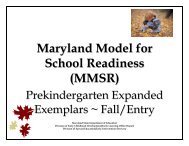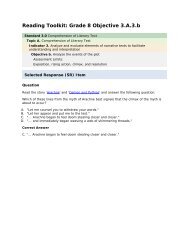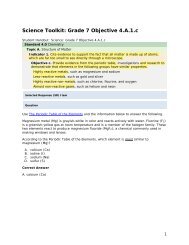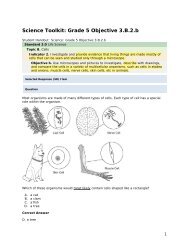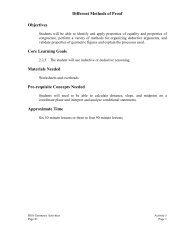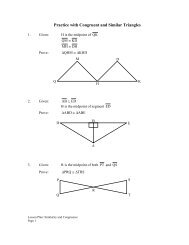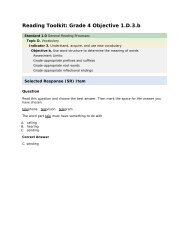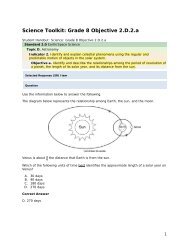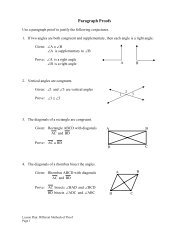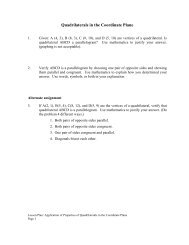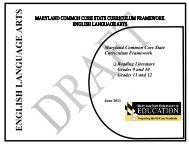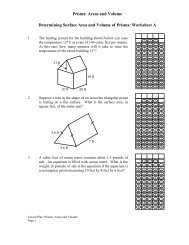Reading grade 8 3.A.3.b - mdk12
Reading grade 8 3.A.3.b - mdk12
Reading grade 8 3.A.3.b - mdk12
You also want an ePaper? Increase the reach of your titles
YUMPU automatically turns print PDFs into web optimized ePapers that Google loves.
<strong>Reading</strong> Toolkit: Grade 8 Objective <strong>3.A.3.b</strong><br />
Personal Narrative<br />
personal story; a shorter form of autobiographical writing<br />
Memoir<br />
type of autobiography, usually about a significant experience in the author's life<br />
Journals<br />
a personal record of experiences or reflections<br />
Short Story<br />
a brief work of fiction, usually readable in one session<br />
Essay<br />
a short, cohesive work of nonfiction dealing with a single subject and presenting the writer's<br />
viewpoint<br />
Play<br />
literature intended to be performed by actors in front of an audience; includes script with<br />
dialogue, a cast of characters, and stage directions<br />
Poetry<br />
stories, ideas, and feelings expressed in compact, imaginative, often musical language<br />
Lyric Poetry<br />
poetry that presents the thoughts and feelings of a single speaker<br />
Narrative Poetry<br />
poetry that tells a story and includes narrative elements<br />
To identify, explain and analyze the conflict of a narrative and determine its role in<br />
advancing the plot, a reader must know the structure of a narrative passage.<br />
• In the beginning or exposition of a narrative, information is given about the characters,<br />
their location, and the situation in which they find themselves. This situation creates a<br />
story problem or conflict.<br />
• A conflict can be created by single or multiple sources, either external (caused by<br />
outside forces) or internal (created within the character). Typical types of conflict include<br />
person versus person (problem between and among characters), person versus society<br />
(problem with the laws/beliefs of a group), person versus nature (problem with natural<br />
forces), person versus self (problem within a character regarding decision-making), and<br />
person versus fate (problem which seems out of a character's control). In complex texts,<br />
there may be multiple conflicts.<br />
A character experiencing one of these conflicts may act on or speak about the conflict to<br />
other characters and be motivated to action by the conflict. In some narratives, a conflict<br />
may help clarify character traits for the reader. In other stories, a conflict can also<br />
advance the story events, pushing the characters to a critical point of a story.<br />
A critical reader can identify and determine conflicts, sometimes isolating a common<br />
cause for different conflicts.<br />
• In the rising action, the chronology of events develops and the conflict deepens. At the<br />
climax of the narrative, the deepening conflict reaches a critical point and can alter the<br />
subsequent events.<br />
• As the conflict resolves, the narrative moves toward completion in the falling action.<br />
• Finally, in the resolution the narrative comes to a close. A critical reader should be able<br />
to analyze the resolution of the conflict and trace the plot development to determine how<br />
each stage of that development advanced the plot.<br />
• As the level of a text becomes more difficult and the main plot develops, a subplot of<br />
lesser importance may be present. The subplot may have all the elements that a main<br />
plot does and will tell a story that relates to character development, theme development,<br />
Content from http://<strong>mdk12</strong>.org/instruction/curriculum/reading/standard3/<strong>grade</strong>8.html 5



